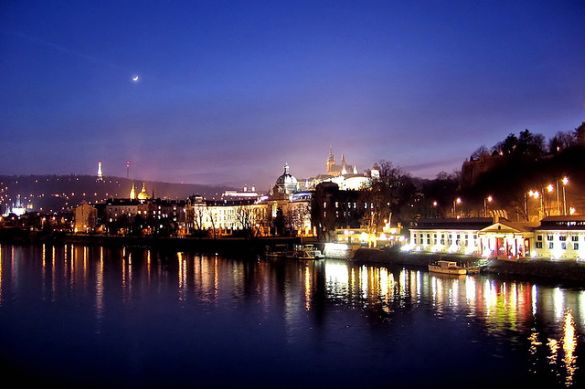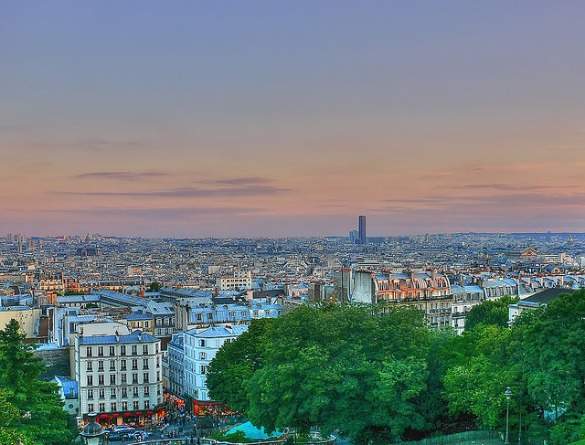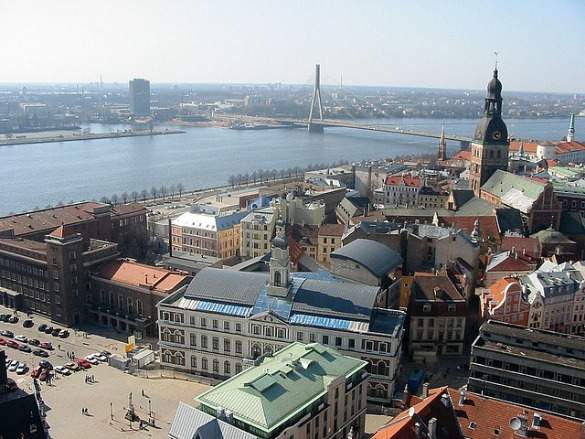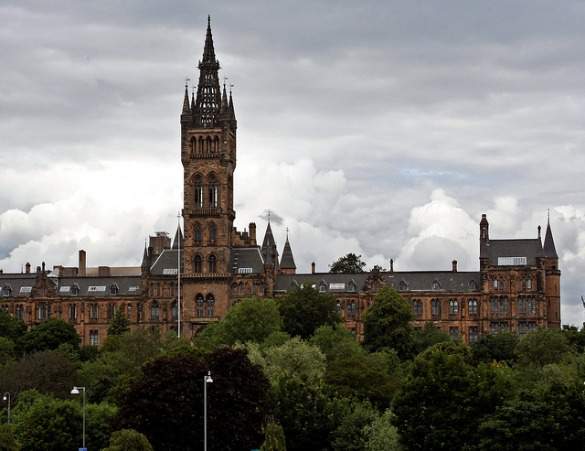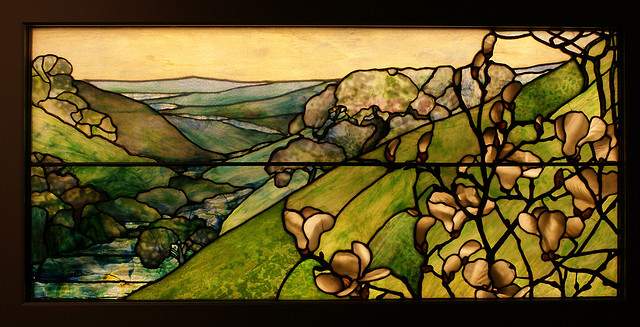Art Nouveau, or “the new art,” hit its peak at the turn of the 20th Century and today looks more vintage than modern. Also known as Jugendstil and Stile Liberty, and a close kin to Arts and Crafts and Modernism, the movement was filled with fluidity and the organic, natural form and stretched across the European continent, Britain, North America, and beyond. There was no more of the rigidity of the Victorian style, this new modern style was all about curves, whether in the stem of a plant or on a woman’s cheek. The style began with flat patterns: posters and fabrics, but after a time everything from buildings to furniture was being built in the new, modern style.
If you’re a fan of Art Nouveau, or simply a lover of architecture or art history, here are some of the best destinations for seeing the art form reflected in the local cityscape.
Prague, Czech Republic
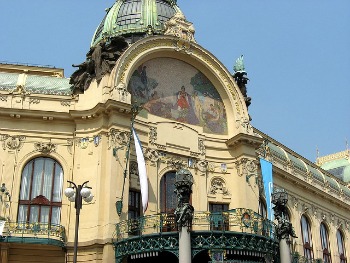 In 1895, Alphons Mucha’s poster for the play Gismonda starring Sarah Bernhardt was plastered across Paris. The style of the poster, from the girl’s Grecian dress to the shaft of wheat in her hand, to the curved letterings hit the city like a storm. Everybody wanted a piece of the “Mucha Style,” and Mucha madly pumped out more lithographs. Eventually, the graphic style became known as Art Nouveau. Though most of his lithography and poster work was done while he was living in Paris, today the bulk of Mucha’s work has gone back to his home of what is now the Czech Republic.
In 1895, Alphons Mucha’s poster for the play Gismonda starring Sarah Bernhardt was plastered across Paris. The style of the poster, from the girl’s Grecian dress to the shaft of wheat in her hand, to the curved letterings hit the city like a storm. Everybody wanted a piece of the “Mucha Style,” and Mucha madly pumped out more lithographs. Eventually, the graphic style became known as Art Nouveau. Though most of his lithography and poster work was done while he was living in Paris, today the bulk of Mucha’s work has gone back to his home of what is now the Czech Republic.
In Prague, the Mucha Museum has many of his original posters of the women and other art. You can also see his work in situ with one prominent stained glass window in St Vitus Cathedral. Prague wasn’t just about Mucha, either. The Municipal House is probably the most famous Art Nouveau building in the city, and it certainly isn’t the only one. There are townhouses in the famous Wenceslas Square, and even dotted throughout the city – in varying states of repair – where you might least expect to find them. To see the best, check out the Art Nouveau in Prague Walking Tour.
>> Get tips for visiting Prague now
>> Discover off-the-beaten-path experiences in Czech Republic
Paris, France
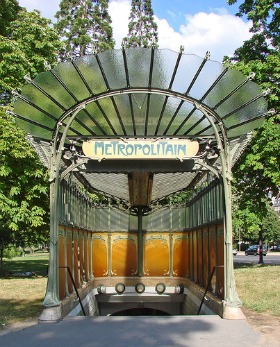 Paris was the epicentre for the Art Nouveau movement, beginning with Mucha’s lithographed posters. When the movement took off across Paris, it was on all fronts. Siegfried Bing opened the Maison de l’Art Nouveau, a gallery encompassing all different facets of the Art Nouveau aesthetic. Then he took it a step further, and helped created the Art Nouveau look for the entire 1900 Exposition Universelle in Paris, a world’s fair, which focused on the “new art.”
Paris was the epicentre for the Art Nouveau movement, beginning with Mucha’s lithographed posters. When the movement took off across Paris, it was on all fronts. Siegfried Bing opened the Maison de l’Art Nouveau, a gallery encompassing all different facets of the Art Nouveau aesthetic. Then he took it a step further, and helped created the Art Nouveau look for the entire 1900 Exposition Universelle in Paris, a world’s fair, which focused on the “new art.”
For a while, Paris’s best and brightest architects were designing in the Art Nouveau, none more so than Hector Guimard. Sadly, many of his buildings were destroyed after Art Nouveau faded from interest. Once, all of the Metro stops had his trademark Nouveau arch above them. Today you can still find two of them, at the Porte Dauphine and the Abbesses stop. There are still some Guimard buildings left as well, including the Castel Beranger with a unique wrought iron gate, Hotel Mezzara, and Hotel Guimard. Find the Art Nouveau in Paris with a self-guided walking tour.
>> Read about museums in Paris to get your art fix
>> To view another art form, check out the best cities to view street art, including Paris
Riga, Latvia
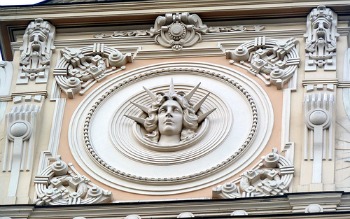 The entire city of Riga stands as an Art Nouveau attraction. According to the UNESCO World Heritage List, Riga is considered to have the most Art Nouveau architecture in one city. During the time frame when the “new art” was popular, nearly half of the buildings in Riga were built in that style, and when the Art Nouveau craze was ending, the Latvian people came up with their own style of Art Nouveau. They called it National Romanticism, and mixed the tenets of Art Nouveau with traditional Latvian design. However, the most prominent architect of the style within Riga wasn’t a Latvian himself, but a Russan transplant, Mikhail Eisenstein.
The entire city of Riga stands as an Art Nouveau attraction. According to the UNESCO World Heritage List, Riga is considered to have the most Art Nouveau architecture in one city. During the time frame when the “new art” was popular, nearly half of the buildings in Riga were built in that style, and when the Art Nouveau craze was ending, the Latvian people came up with their own style of Art Nouveau. They called it National Romanticism, and mixed the tenets of Art Nouveau with traditional Latvian design. However, the most prominent architect of the style within Riga wasn’t a Latvian himself, but a Russan transplant, Mikhail Eisenstein.
A few of the Art Nouveau highlights that can still be seen today include The Riga Law School and the Stockholm School of Economics. Elizabetes Street is the main drag for the Art Nouveau crowd, although Alberta Street and Strelnieku Street also have their draws.
>> Check out eight reasons why you should visit Riga soon
>> Look for hostels in Riga
Brussels, Belgium
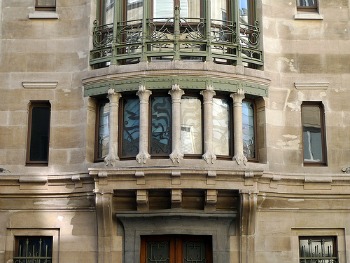 Though Alphons Mucha may have been the first to design something in Art Nouveau, it was Victor Horta in Brussels who was arguably the first to apply it to architecture. Even the French architect Hector Guimard got his inspiration from Horta., who has been called the leading architect of the movement.
Though Alphons Mucha may have been the first to design something in Art Nouveau, it was Victor Horta in Brussels who was arguably the first to apply it to architecture. Even the French architect Hector Guimard got his inspiration from Horta., who has been called the leading architect of the movement.
Horta was commissioned to create what became the first Art Nouveau building in Brussels, the Hotel Tassel, which still stands today. After that the style became very popular throughout the city – not to mention across the rest of Europe – and he was commissioned to design several other buildings. The Hotel Tassel and three of his other major Art Nouveau townhouses have been designated UNESCO World Heritage Sites: Hotel van Eetvelde, Hotel Solvay, and Maison and Atelier Horta. The Atelier Horta now also functions as a Horta Museum.
Another notable site by Horta is the Waucquez Warehouse, which now contains the Belgian Comic Strip Centre, an attraction in its own right. After the First World War, Horta’s art changed toward the less organic and more rigid Art Deco style, and some of those buildings can also be found scattered throughout the city. If you prefer your architecture touring organized, you can wander the Art Nouveau district on foot with ARAU or take their 1900 Brussels Art Nouveau coach tour.
>> Check out our Brussels travel guide
>> Search for cheap flights to Belgium
Glasgow, Scotland
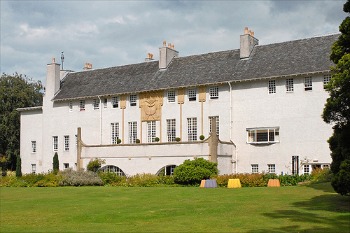 Charles Rennie Mackintosh was the main conduit of the Art Nouveau movement into the British isles, even if he did develop it in a most peculiar way. It wasn’t through moving to Europe and studying with the “masters” there, no. He learned about the organic forms of Japanese style through work in the Glasgow shipyards, and combined it with the heavy onslaught of modernism coming from the European mainland and the ideals of the British Arts and Crafts movement: of a connection to materials, a romanticism of true craftsmanship, and a denial of the industrial complex.
Charles Rennie Mackintosh was the main conduit of the Art Nouveau movement into the British isles, even if he did develop it in a most peculiar way. It wasn’t through moving to Europe and studying with the “masters” there, no. He learned about the organic forms of Japanese style through work in the Glasgow shipyards, and combined it with the heavy onslaught of modernism coming from the European mainland and the ideals of the British Arts and Crafts movement: of a connection to materials, a romanticism of true craftsmanship, and a denial of the industrial complex.
Several of the buildings that can be seen in modern day Glasgow are this unique blend of styles that Charles Rennie Mackintosh created. These include The Mackintosh Building at the Glasgow School of Art, the newly restored Willow Tearooms, Queen’s Cross Church, and even his House for an Art Lover, which was built from his exact specifications – but not until 1996. To find out more about all things Mackintosh, check out the Charles Rennie Mackintosh Society.
>> Look for cheap flights to Scotland
>> Plan your trip with our Scotland travel guide
Winter Park, Florida, USA
The Charles Hosmer Morse Museum of American Art, in Winter Park, Florida, may seem a bit of a strange destination on this list of cities, but it’s where one of the best collections of Art Nouveau styled decorative items can still be found today. The centrepiece of this museum is the Tiffany collection, a comprehensive collection of all of the different mediums that Louis Comfort Tiffany designed.
It wasn’t just the popular “Tiffany lamps,” that he created, but everything from glass buttons to the full-sized interior of the chapel for the 1893 World’s Columbian Exhibition in Chicago. Though Tiffany did a whole range of household items, his focus – still known today – was glassware. In creating the glass, Tiffany melted down colored glass, rather than painting the glass, which had been the previous method of creating the bright colors. This was an idea very similar to the tenets of the Arts and Crafts movement, and his curves and floral motifs showed a connection to the general Art Nouveau movement.
>> Discover five great Florida trip spots
>> Search for cheap flights to Florida
Barcelona, Spain
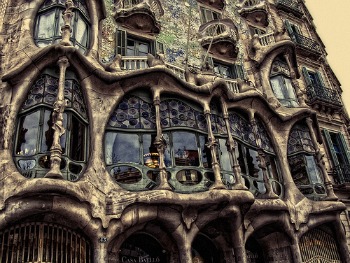 Barcelona’s cityscape of topsy-turvy buildings and melting ice cream cone towers owes its pedigree to Antoni Gaudi. Some of Gaudi’s earliest works in the city, such as the lampposts in the Placa Reial, right off Las Ramblas, show a direct root in Art Nouveau. However, the architect spiralled out into his own vision which has a vaguely Gothic interest, a definitely organic and nature-inspired aesthetic, and a whole lot of imagination.
Barcelona’s cityscape of topsy-turvy buildings and melting ice cream cone towers owes its pedigree to Antoni Gaudi. Some of Gaudi’s earliest works in the city, such as the lampposts in the Placa Reial, right off Las Ramblas, show a direct root in Art Nouveau. However, the architect spiralled out into his own vision which has a vaguely Gothic interest, a definitely organic and nature-inspired aesthetic, and a whole lot of imagination.
Gaudi’s crown jewel is the as-yet-unfinished cathedral, La Sagrada Familia, which resembles a melting pudding with spindly towers. There is also the Parc Guell with ginger-bread style houses and sea serpents. And the townhouse Casa Mila with a nautical facade – like ocean waves with metal seaweed balconies, an equally impressive interior, and a roof of sentinel-like creatures and great sandy waves. Casa Battlo is the townhouse with the scaly exterior walls and bony balcony, and the giant curving spine of a dragon on its back. You can find a tour hitting Gaudi sites anywhere in Barcelona, but apparently, or take the free Gaudi Tour through Runner Bean Tours.
>> Learn more about what to see and do in Barcelona
>> Find cheap hotels in Barcelona
London – Liberty & Co department store
In Italy, Art Nouveau was also known as Stile Liberty, after a department store in London. It may sound incongruous, but it was the department store Liberty & Co, Regency Street in London, that helped get the decorative style of Art Nouveau out to the shopping public. Arthur Lasenby Liberty created a legacy of helping to develop the artists of Art Nouveau and the Arts and Crafts movement, and put their designs into his store, helping make a name for himself as a proprietor of the modern style at the same time. Though the Liberty & Co. Building is actually a Tudor building, Liberty’s Art Nouveau legacy lives on, and it’s worth a pilgrimage to the site that made the Art Nouveau movement familiar with the everyday people.
>> Find cheap flights to London
>> Learn more about shopping in London
Learn more about art and architecture around the world:
- The World’s Best Cities for Viewing Street Art
- 8 Paintings Every Traveler Should See
- 6 Ephemeral Art Forms You Won’t Want to Miss
- Best Architecture Cities in the World
Photos by: Vlastula, bluelineswinger, madebycedric, dalbera, onerandommonkey, lostajy, Trent Strohm, Arco Ardon, ben kucinski, dalbera, griannan, Christopher Chan, john.purvis, heattheronhertravels
